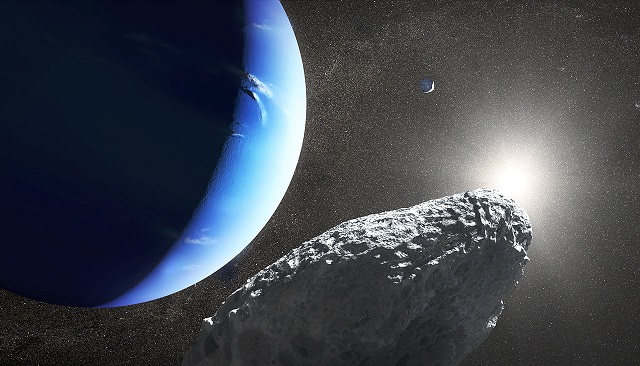Neptune’s tiny Moon may be result of comet collision: Scientists
Neptune’s recently discovered tiny Moon could be the result of a collision between its larger Moon and a comet billions of years ago, say a team of planetary scientists.
The tiny Moon, named Hippocamp – meaning a half-horse half-fish from Greek mythology, was discovered by NASA’s Hubble Space Telescope in 2013.
Hippocamp is unusually close to a much larger Neptunian Moon called Proteus. Normally, a Moon like Proteus should have gravitationally swept aside or swallowed the smaller Moon while clearing out its orbital path.
However, the team found that the diminutive Moon, which is only 1/1000th the mass of Proteus or about 34 kilometres across, may actually be a broken-off fragment from Proteus, which is much larger – about 418 kilometres across.
This is the first evidence for a Moon being an offshoot from a comet collision with a much larger parent body, according to the paper appearing in the journal Nature.
“The first thing we realised was that you wouldn’t expect to find such a tiny Moon right next to Neptune’s biggest inner Moon,” said Mark Showalter of the SETI Institute in Mountain View, California.
“In the distant past, given the slow migration outward of the larger Moon, Proteus was once where Hippocamp is now.”
The findings are supported by Voyager 2 images from 1989 that show a large impact crater on Proteus, almost large enough to have shattered the Moon.
“In 1989, we thought the crater was the end of the story,” said Showalter. “With Hubble, now we know that a little piece of Proteus got left behind and we see it today as Hippocamp.”
The orbits of the two moons are now about 12,070 kilometres apart.
Estimates of comet populations have revealed that other moons in the outer solar system have been hit by comets, smashed apart, and re-accreted multiple times.
But, “this pair of satellites provides a dramatic illustration that moons are sometimes broken apart by comets,” noted Jack Lissauer of NASA’s Ames Research Centre in California.




